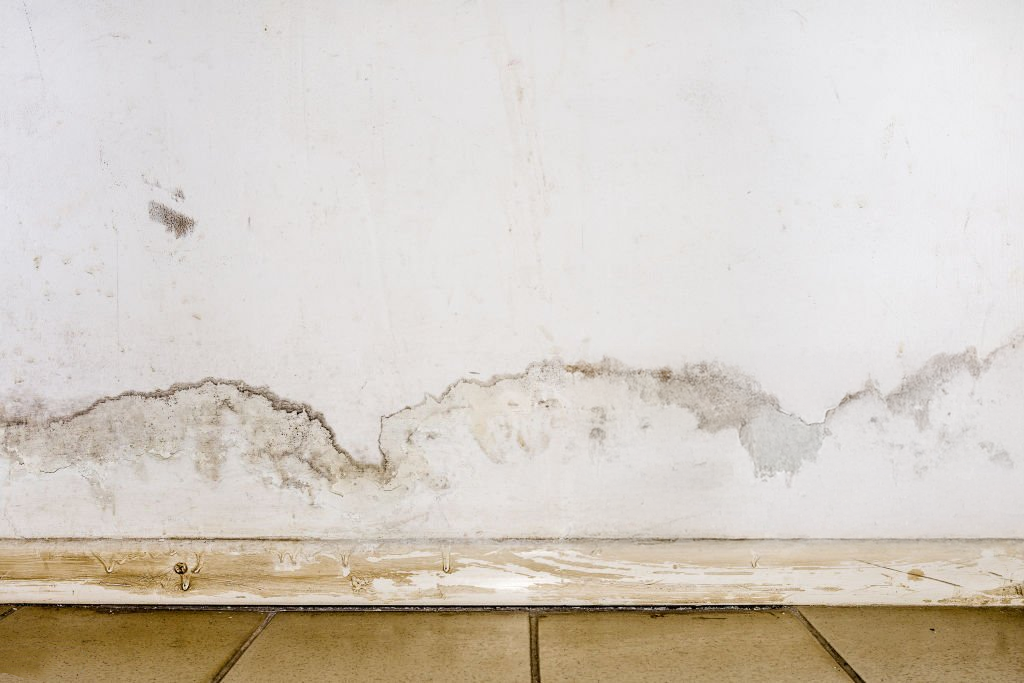Rising damp is one of those property issues that can creep up on you, literally. While it might begin with subtle signs like a musty smell or peeling wallpaper, ignoring these early indicators can lead to costly structural damage and even affect your health. One of the most common questions homeowners ask is, “Does rising damp smell?”
Yes, rising damp does smell. It produces a musty, earthy odour caused by moisture and mould growing in walls and floors. This smell is often one of the first signs of a damp problem and shouldn’t be ignored. Early action can prevent serious damage to your home and your health.
In this blog, we’ll explore what rising damp is, the tell-tale odours associated with it, how to identify other early signs, and what you should do if you suspect your home is affected. If you’re based in London or the surrounding areas, Henderson Wood is here to help with expert advice, professional damp surveys, and tailored solutions.
What Is Rising Damp?
Rising damp occurs when moisture from the ground travels upwards through the porous materials of a building, such as bricks and mortar. This process is driven by capillary action and usually affects walls on the ground floor. The moisture brings with it salts and minerals from the ground, which can crystallise on wall surfaces and lead to further deterioration.
This type of damp is most common in older buildings without an effective damp-proof course (DPC) or where the DPC has failed. It’s also more likely to occur in properties with poor drainage or high ground levels against external walls.
Does Rising Damp Smell?
Yes, one of the most distinctive signs of rising damp is a persistent musty or earthy odour. This unpleasant smell is a result of moisture trapped within the building materials, which creates the perfect breeding ground for mould and mildew. Over time, these fungi release microbial volatile organic compounds (MVOCs) that give off that recognisable damp, stale scent.
What Does Rising Damp Smell Like?
Musty or earthy – like wet soil or forest undergrowth
Mouldy – similar to the smell of damp clothes left too long in a washing machine
Stale – sometimes described as old or ‘rotting paper’
Unpleasantly sweet – in cases of active mould colonisation
If you’ve noticed any of these smells, especially in rooms on the ground floor, it’s wise to investigate further.
Other Early Signs of Rising Damp
While odour is a strong early indicator, it should never be considered in isolation. Rising damp often presents with a combination of visual and tactile clues, including:
Peeling or bubbling wallpaper and paint
Tide marks – brown or yellowish staining about one metre up from the floor
Mould and mildew growth – especially near skirting boards
Cold or damp patches – even when heating is on
Crumbling plaster or brickwork
Warping of wooden skirting boards or flooring
Salt deposits (efflorescence) – white powdery residue on walls
These symptoms may worsen during the colder months when heating drives moisture up the walls more aggressively, making it more visible and smell more intense.
The Health Risks of Ignoring Rising Damp
Beyond damaging your property, rising damp can also pose a risk to your health. Prolonged exposure to mould and damp environments has been linked to respiratory issues, including:
Asthma and allergy flare-ups
Persistent coughs
Skin irritation
Nasal congestion
Young children, the elderly, and those with weakened immune systems are particularly vulnerable. Poor indoor air quality caused by rising damp can create an unhealthy living environment, making early identification and action even more important.
What to Do If You Suspect Rising Damp
If you’ve detected a musty smell or any of the other early signs mentioned, it’s important to act promptly. Here’s what you should do:
Don’t Rely on Smell Alone
A musty smell can indicate several moisture problems, not just rising damp. Condensation or penetrating damp could also be to blame, so it’s essential to get a professional diagnosis.
Arrange a Professional Damp Survey
Contact a qualified damp surveyor to carry out a comprehensive inspection. At Henderson Wood, our surveys include moisture readings, salt analysis, and checks for structural vulnerabilities. This helps confirm whether rising damp is present and the extent of the damage.
Avoid Quick Fixes
Many DIY solutions, such as repainting or using dehumidifiers, only treat the symptoms, not the cause. These approaches may temporarily mask the smell or damp patches, but the underlying issue will persist and worsen.
Consider Effective Damp Proofing Solutions
Treatment options will vary depending on the severity of the damp, but commonly include:
Damp-proof course (DPC) injection – creating a barrier to block moisture
Installing a physical membrane beneath floors or inside walls
Improved drainage around the base of your property
Replastering – with salt-resistant materials to prevent further damage
Each home is different, so a tailored approach is crucial.
Why Choose Henderson Wood?
At Henderson Wood, we specialise in protecting and preserving homes across London and the surrounding areas. Our experienced team understands the challenges faced by property owners, from hidden rising damp issues in Victorian terraces to modern flats with moisture problems.
What Sets Us Apart:
Decades of combined experience in diagnosing and treating damp issues
Professional, friendly service that puts homeowners first
Honest, jargon-free advice you can trust
Tailored treatment plans designed around your property’s needs
Fully insured and accredited professionals committed to quality and transparency
When you choose Henderson Wood, you’re not just treating damp — you’re protecting your investment, improving your indoor air quality, and ensuring a safe, healthy living environment for years to come.
Don’t Wait Until It Gets Worse
Rising damp won’t go away on its own. Ignoring the early warning signs can lead to long-term structural damage and potential health risks. If you suspect rising damp or notice musty smells, peeling paint, or salt marks on your walls, contact Henderson Wood today for a comprehensive damp survey and clear guidance on the next steps.

